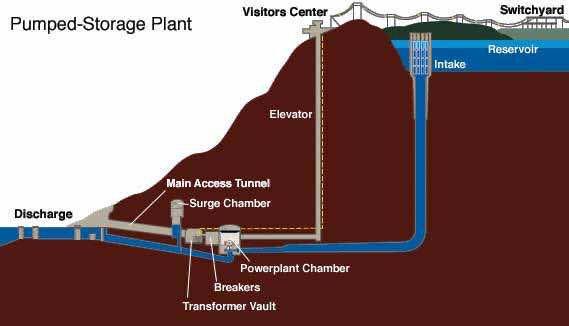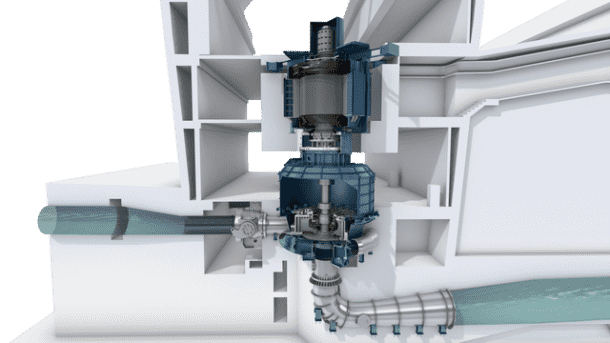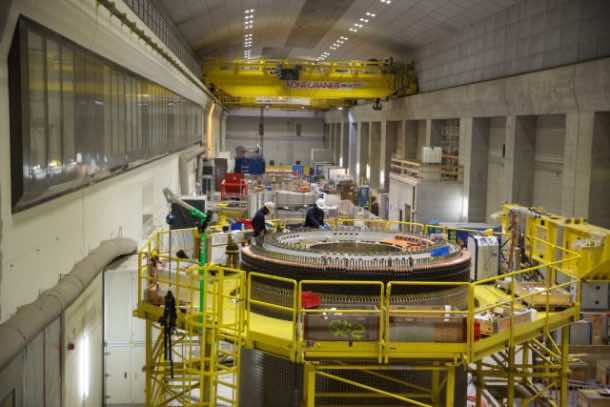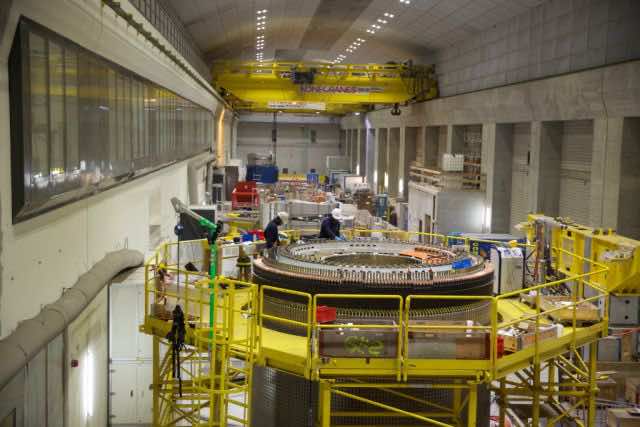The world is constantly on the lookout for new means to harness the natural energy resources and a shift from carbon fuel to clean energy sources is globally evident. The increase in popularity of the electric cars and other such technologies establishes the need for better, cost-effective energy sources offering higher efficiency.
The pumped water storage system was first introduced in the last decade of the 1800s. Today, the technology is being used to generate almost 98 percent of the world energy. Pumped water storage comprises of two huge water reservoirs constructed at different heights. The water is pumped up to the reservoir at the higher elevation from where it flows downhill to run the turbines that in turn are used to generate electricity. The popularity of hydroelectric power technology is attributed to the high efficiency of more than 80 percent. On the plus side, the system is also infinitely rechargeable.

GE revealed last week that it was working on the remodeling of a hydropower plant. The Swiss hydroelectric plant is being fitted with the variable speed turbines to increase the storage capacity of the European power grid for the renewable sources. It is one of the largest hydropower storage remodeling projects around the globe.
The Linthal plant is almost 2490 meters above the sea level and is located between the two scenic mountain lakes, separated by a cliff twice as tall as the Eiffel Tower. When being operated at its full capacity of 23 billion gallons, the output of power plant can go as high as 1450 MW. This output energy is the same as that of a nuclear power plant. The replaced variable speed turbines will enhance its energy efficiency even further. You can see work goin on in the Linthal power plant in this video:
There are more than 270 pumped water storage power generation plants around the world, out of which merely 17 plants utilize the variable speed turbines technology. However, GE believes that this technology would be the future of the pumped water storage plants. HIS, the renowned energy consultancy firm, estimates that the pumped hydropower storage may rise as high as 40GW per year by 2022.

It is noteworthy to mention here that the variable-speed turbines come at a cost and even the remodeling does not come cheap. However, the increase in efficiency easily compensates for the elevated cost given that it will give a huge control over the amount of electricity being consumed and generated.
The conventional technologies dictate that the energy must be stored in blocks, or be harvest in an amount regulated by the capacity of the pump water storage system. This implies that for a water pump storage system being operated in the blocks of 10MW, the system would not be able to store 14MW of excess power and 4 MW will go wasted as the system can only store 10MW. On the other hand, the variable speed turbines give more control to the operators to harvest energy precisely.

As the world shifts onto the renewable energy sources such as the wind, solar, and water energy, the control being provided by the variable speed turbines becomes quite significant.
GE and Hitachi are both working towards equipping the currently installed pumped water storage systems with the variable speed turbines. GE claims that 3000MW projects of the same scope are underway. Similarly, Norway is working on the construction of the two undersea cables from UK and Germany. The cables will become operational in 2020 and will store the surplus energy being generated by the Europe in the high mountain lakes of the country.


